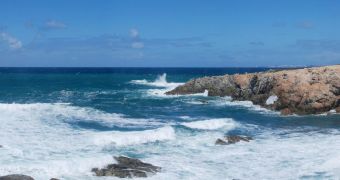Scientists have determined in a new study that deep waters in the Atlantic Ocean flowed backwards when compared to their current direction, some 20,000 years ago. The change in course may have had something to do with the last Ice Age, experts now propose.
Today, the predominant direction for deep waters in the ocean is southwards, but they may have flowed northwards before the end of the last glacial epoch, more than 11,000 years ago.
At the time when the ocean flowed “backwards,” a large part of the world was still covered in a mile-high ice sheet, that extended well into areas that are now considered to be temperate.
In the new study, the investigators also suggest that the massive shift may have taken place when significant and profound climate change affected Earth, Our Amazing Planet reports.
The oceans and the atmosphere are not two separate systems when it comes to their influence on the environment. They have worked together in dictating Earth's climate since day one.
In the north Atlantic, for example, the Gulf Stream, carrying warm surface water, circles in a loop, releasing the heat, and sinking its cooled water at large depths.
The released heat is then pushed by prevailing winds over Europe, heating it up, and releasing large amounts of rain over the United Kingdom and France. If the north Atlantic current stops, Europe freezes again, climate experts estimate.
For many years, researchers have been arguing whether the Atlantic circulation was weak or strong when flowing backwards. Evidences to support both viewpoints existed, but the new study strongly favors the faction arguing for the strong circulation patterns.
Using a research vessel, experts collected core sample some 128 feet (39 meters) long from the bottom of the Atlantic Ocean, at a depth of 8,000 feet (2,440 meters) under the surface.
Some 5 meters of length starting from the top of the sample show changes that took place in the Atlantic over the past 50,000 years,
“It is very tricky to take such long cores from such depth without breaking the metal tube in the open ocean, which usually has bad weather conditions,” says of the research effort scientist César Negre.
He holds an appointment as paleoceanographer at the Autonomous University of Barcelona, in Spain, and ws also a member of the research team that conducted the investigation.
Details of the work are published in the November 4 issue of the esteemed scientific journal Nature.

 14 DAY TRIAL //
14 DAY TRIAL //